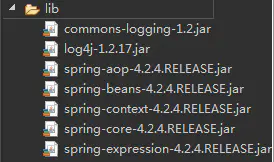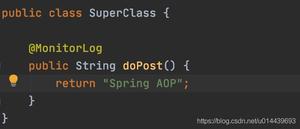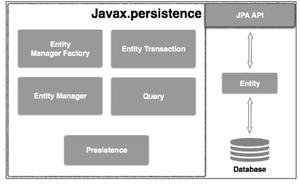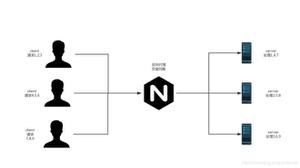Spring之使用注解实例化Bean并注入属性
本文内容纲要:
- 1.准备工作- 2.注解实例化Bean
- bean的作用域配置
- Spring中可以使用scope属性来配置bean的作用域:
- singleton:单例,在初始化配置文件时生成单例bean对象
- prototype:原型的,在初始化配置文件时不生成bean对象,使用时返回不同的bean对象
- request:web环境下每一个request请求都会返回一个不同的bean,只在本次请求中有效
- session:web环境下每一个request请求都会返回一个不同的bean,在session中有效
- 3.注解为属性赋值
- 4.注解和xml结合使用
1.准备工作
(1)导入jar包
除了上篇文章使用到的基本jar包外,还得加入aop的jar包,所有jar包如下

所需jar包
(2)配置xml
<?xml version="1.0" encoding="UTF-8"?> <beans xmlns="http://www.springframework.org/schema/beans" xmlns:xsi="http://www.w3.org/2001/XMLSchema-instance" xmlns:context="http://www.springframework.org/schema/context" xsi:schemaLocation="http://www.springframework.org/schema/beans http://www.springframework.org/schema/beans/spring-beans.xsd http://www.springframework.org/schema/context http://www.springframework.org/schema/context/spring-context.xsd"> <!-- 开启注解扫描,到包里面扫描类、属性、方法上是否有注解 --> <context:component-scan base-package="com.codeliu"/> </beans>2.注解实例化Bean
(1)实例化Bean有四个注解
- @Component
- @Service:业务层
- @Controller:WEB层
- @Repository:持久层
虽然分了层,但目前这四个注解的功能是一样的。
@Service(value = "user") //相当于bean标签中的id,四种方式功能一样// @Component(value = "user")
// @Controller(value = "user") // @Repository(value = "user") @Scope(value = "singleton") public class User { public void print() { System.out.println("user......"); } }
@Test
/**
* 使用注解实例化User类
*/
public void testUser() { // 读取配置文件 @SuppressWarnings("resource") ApplicationContext context = new ClassPathXmlApplicationContext("bean.xml"); User user = (User)context.getBean("user"); user.print(); }
bean的作用域配置
Spring中可以使用scope属性来配置bean的作用域:
singleton:单例,在初始化配置文件时生成单例bean对象
prototype:原型的,在初始化配置文件时不生成bean对象,使用时返回不同的bean对象
request:web环境下每一个request请求都会返回一个不同的bean,只在本次请求中有效
session:web环境下每一个request请求都会返回一个不同的bean,在session中有效
3.注解为属性赋值
首先来个UserDao
@Component(value = "userDao")public class UserDao { public void print() { System.out.println("userdao......"); } }
再来个service
@Service(value = "userService")public class UserService { // 注入对象类型的属性,不用提供set方法 // 1.使用自动装配 // @Autowired // 为byType类型,如果有多个相同类型的,得配合@Qualifier注解 // private UserDao userDao; // 2.不使用自动装配 @Resource(name = "userDao") private UserDao userDao; // 注入普通类型的属性 @Value(value = "CodeTiger") private String name; public void print() { System.out.println("UserService......"); userDao.print(); System.out.println(name); } }
为属性赋值,我们可以使用自动装配,也可以手动赋值。
@Test /**
* 使用注解注入属性
*/
public void testUserService() { @SuppressWarnings("resource") ApplicationContext context = new ClassPathXmlApplicationContext("bean.xml"); UserService service = (UserService)context.getBean("userService"); service.print(); }
4.注解和xml结合使用
当然我们也可以同时使用注解和xml,一般我们在xml中实例化Bean,使用注解为属性赋值。
Spring@Autowired注解与自动装配
1 配置文件的方法
我们编写spring 框架的代码时候。一直遵循是这样一个规则:所有在spring中注入的bean 都建议定义成私有的域变量。并且要配套写上 get 和 set方法。
| margin: 0; word-wrap: break-word; border-color: rgba(221, 221, 221, 1); font-size: 14px; color: rgba(79, 79, 79, 1); line-height: 22px"> Boss 拥有 Office 和 Car 类型的两个属性:
[java] view plain copy
System.out.println必须实现toString方法
[xhtml] view plain copy
当我们运行以下代码时,控制台将正确打出 boss 的信息:
[java] view plain copy
|
2 @Autowired
Spring 2.5 引入了 @Autowired 注释,它可以对类成员变量、方法及构造函数进行标注,完成自动装配的工作。 通过 @Autowired的使用来消除 set ,get方法。
要实现我们要精简程序的目的。需要这样来处理:
* 在applicationContext.xml中加入:
[c-sharp] view plaincopy
- <bean class="org.springframework.beans.factory.annotation.AutowiredAnnotationBeanPostProcessor"/>
Spring 通过一个 BeanPostProcessor 对 @Autowired 进行解析,所以要让 @Autowired 起作用必须事先在 Spring 容器中声明 AutowiredAnnotationBeanPostProcessor Bean。
* 修改在原来注入spirng容器中的bean的方法。
在域变量上加上标签@Autowired,并且去掉 相应的get 和set方法
清单 6. 使用 @Autowired 注释的 Boss.java
[java] view plaincopy
- package com.baobaotao;
- import org.springframework.beans.factory.annotation.Autowired;
- public****class Boss {
- @Autowired
- private Car car;
- @Autowired
- private Office office;
- …
- }
* 在applicatonContext.xml中 把原来 引用的
[xhtml] view plaincopy
- <****beansxmlns="http://www.springframework.org/schema/beans"
- xmlns:xsi="http://www.w3.org/2001/XMLSchema-instance"
- xsi:schemaLocation="http://www.springframework.org/schema/beans
- http://www.springframework.org/schema/beans/spring-beans-2.5.xsd">
- <****beanclass="org.springframework.beans.factory.annotation.
- AutowiredAnnotationBeanPostProcessor"/>
- <****beanid="boss"class="com.baobaotao.Boss"/>
- <****beanid="office"class="com.baobaotao.Office">
- <****propertyname="officeNo"value="001"/>
- </bean>
- <****beanid="car"class="com.baobaotao.Car"scope="singleton">
- <****propertyname="brand"value=" 红旗 CA72"/>
- <****propertyname="price"value="2000"/>
- </bean>
- </beans>
这样,当 Spring 容器启动时,AutowiredAnnotationBeanPostProcessor 将扫描 Spring 容器中所有 Bean,当发现 Bean 中拥有 @Autowired 注释时就找到和其匹配(默认按类型匹配)的 Bean,并注入到对应的地方中去。
按照上面的配置,Spring 将直接采用 Java 反射机制对 Boss 中的 car 和 office 这两个私有成员变量进行自动注入。所以对成员变量使用 @Autowired 后,您大可将它们的 setter 方法(setCar() 和 setOffice())从 Boss 中删除。
当然,您也可以通过 @Autowired 对方法或构造函数进行标注,如果构造函数有两个入参,分别是 bean1 和 bean2,@Autowired 将分别寻找和它们类型匹配的 Bean,将它们作为 CountryService (Bean1 bean1 ,Bean2 bean2) 的入参来创建 CountryService Bean。来看下面的代码: 对方法
[java] view plaincopy
- package com.baobaotao;
- public****class Boss {
- private Car car;
- private Office office;
- @Autowired
- public****void setCar(Car car) {
- this.car = car;
- }
- @Autowired
- public****void setOffice(Office office) {
- this.office = office;
- }
- …
- }
这时,@Autowired 将查找被标注的方法的入参类型的 Bean,并调用方法自动注入这些 Bean。而下面的使用方法则对构造函数进行标注:
[java] view plaincopy
- package com.baobaotao;
- public****class Boss {
- private Car car;
- private Office office;
- @Autowired
- public Boss(Car car ,Office office){
- this.car = car;
- this.office = office ;
- }
- …
- }
由于 Boss() 构造函数有两个入参,分别是 car 和 office,@Autowired 将分别寻找和它们类型匹配的 Bean,将它们作为 Boss(Car car ,Office office) 的入参来创建 Boss Bean。
Spring注解:自动注入属性(@Resource、@Autowired、@Qualifier )
先写一个场景,举例说明:
1、接口:IAnimal
public Interface IAnimal{ ......
}
2、实现类:DogImpl ,实现了IAnimal接口。
@Service("dogImpl")public class DaoImpl impliments IAnimal{
...
}
3、业务类:AnimalController
public class AnimalController { @Autowired
private IAnimal dogImpl;
......
}
假如有一个“动物”的接口 IAnimal, DogImpl类实现了接口 IAnimal, 且该接口只有 DogImpl这一个实现类,那么在引用实现类的时候,我们使用的是实现类的接口(像上面程序展示的那样)。Spring会按 byType的方式寻找接口的实现类,将其注入。
假如有另一个实现类 CatImpl 也实现了接口 IAnimal, 这时候再按上面的方式去引用, 在同时存在两个实现类的情况下,会出现什么情况呢?
答:会报错。 这是由于 @Autowired 的特性决定的: @Autowired 的注入方式是 byType 注入, 当要注入的类型在容器中存在多个时,Spring是不知道要引入哪个实现类的,所以会报错。
那么在同一类型拥有多个实现类的时候,如何注入呢?
答:这种场景下,只能通过 byName 注入的方式。可以使用 @Resource 或 @Qualifier 注解。
@Resource 默认是按照 byName 的方式注入的, 如果通过 byName 的方式匹配不到,再按 byType 的方式去匹配。所以上面的引用可以替换为:
public class AnimalController { @Resource(name="dogImpl") //实现类1中 @Service注解中标定的名称
private IAnimal dogImpl;
......
}
@Qualifier 注解也是 byName的方式,但是与@Resource 有区别,@Qualifier 使用的是 类名。
public class AnimalController { @Qualifier("DaoImpl") //实现类1的类名。注意区分与@Resource(name="dogImpl") 的区别。
private IAnimal dogImpl;
......
}
总结:
1、@Autowired 是通过 byType 的方式去注入的, 使用该注解,要求接口只能有一个实现类。
2、@Resource 可以通过 byName 和 byType的方式注入, 默认先按 byName的方式进行匹配,如果匹配不到,再按 byType的方式进行匹配。
3、@Qualifier 注解可以按名称注入, 但是注意是 类名。
附:https://www.jianshu.com/p/80df0a6daf65
https://blog.csdn.net/l1212xiao/article/details/80424064
本文内容总结:1.准备工作,2.注解实例化Bean,bean的作用域配置, Spring中可以使用scope属性来配置bean的作用域:, singleton:单例,在初始化配置文件时生成单例bean对象, prototype:原型的,在初始化配置文件时不生成bean对象,使用时返回不同的bean对象, request:web环境下每一个request请求都会返回一个不同的bean,只在本次请求中有效, session:web环境下每一个request请求都会返回一个不同的bean,在session中有效,3.注解为属性赋值,4.注解和xml结合使用,
原文链接:https://www.cnblogs.com/myseries/p/10825540.html
以上是 Spring之使用注解实例化Bean并注入属性 的全部内容, 来源链接: utcz.com/z/296352.html








